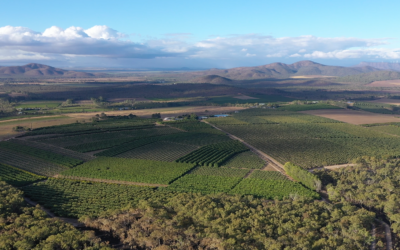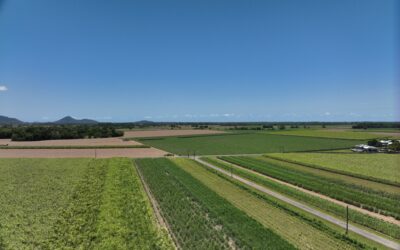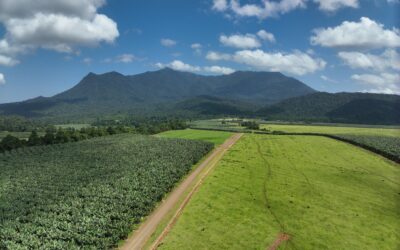Darcy Filmer from Natural Solutions, who sources our beneficial insects used for spreading, has been kind enough to share one of his success stories with beneficials that led to the farmer having one of his best crops yet! After some discussions with an agronomist in the NT, Darcy supplied some Montdorensis (or Monties as Darcy calls them) to him for a vegetable grower to control thrip in his Hairy Melon crop (a crop Darcy had never seen). It was a very bad season for thrips with growers across the district having problems with them, needing to apply regular applications of insecticide to try and control them.
A few weeks after the monties were released. Darcy got a message from the agronomist that the grower was concerned as he wasn’t seeing any of the Monties in his crop. Darcy was in the district the following week and concerned that they hadn’t worked and that he had wasted the growers time and money he followed up and visited the grower with the agronomist to see what was going on.
Darcy noticed when he got to the farm that there was fruit everywhere, and he’d never expected to see so much, so he asked the grower, “Is this a normal size crop or bigger than usual?” The grower said “Oh yes this is a very big crop, bigger than usual and very little damage”. So, Darcy was thinking, well what’s the problem but still went and inspected the crop intently for thrips, damage on the fruit and monties, which took them quite a while to find, and the damage they did find both the farmer and agronomist said wasn’t that bad.
The Monties had been released 3-4 weeks before, while the crop was flowering, and while there were few numbers of thrips, because he had released the Monties the farmer didn’t spray insecticide as he would normally do during flowering to control the thrip. So he didn’t kill his pollinators such as Bees, Hoverflies, and Lacewings that come in from the surrounding bush. Thus, giving a better pollination, hence a better shaped fruit and more of it. Yes, there was some damage but the monties had controlled the thrip to a point where the damage was insignificant. The loss of fruit from damage was easily made up for by the increase in crop load from better pollination. The neighbours however were still having problems with thrip damage on their fruit. The monties had done the job for this farm keeping thrip numbers down, and clearly moved on to find more prey.
After talking this through with the grower and the agronomist they both agreed this is what had happened. Trying to reduce one problem by using the beneficial mite, not only reduced the mite problem but also gave the (unexpected) benefit of letting other beneficials move into the crop giving a better outcome for the grower.
If you’re interested in improving your farm please give us a call or send us an email!



